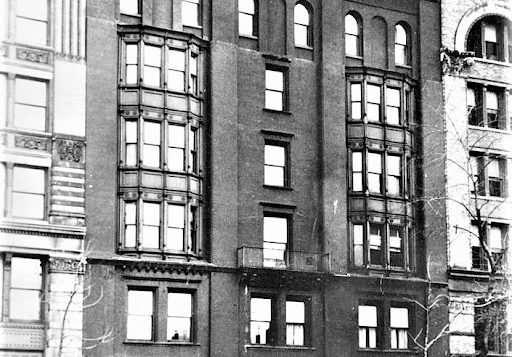
IT WAS A NEW PROBLEM for which property developers, ever eager to pocket a buck, found the perfect solution. In the 1870s and ’80s, a disturbing species began to invade Manhattan: undomesticated young men longing to live free of their parents, but a little short of the ready to do so. They were painters and poets starving for their art; they were twenty-somethings just entering their professions, with good prospects but meager wages; they were scions of great wealth waiting for Daddy to die. Untethered and randy, the men were looking for somewhere to live that was stylish, cheap and convenient to all the sensual pleasures the metropolis had to offer. Cue the rise of the bachelor apartment building.
Building for bachelors offered several significant opportunities for cost-cutting. Since the tenants would take their meals at restaurants or clubs, there was no call for a proliferation of kitchens. Single men might even be amenable to communal toilets or shared showers. No nurseries, no live-in nannies or housemaids, no visiting in-laws to accommodate. All that the young gentlemen demanded was a thin veneer of New York sophistication—and a discreet doorman trained to avert his eyes from folly of all kinds.
The first of these men-only apartment buildings was erected at 79-80 Washington Square East. Called The Benedick in honor of the marriage-averse character in Much Ado About Nothing, the building was intended as studios and residences for bachelor artists.
William Benemann is the author of Unruly Desires: American Sailors and Homosexualities in the Age of Sail, and Men in Eden: William Drummond Stewart and Same-Sex Desire in the Rocky Mountain Fur Trade.








Discussion1 Comment
Interesting. I am writing a TV series about a gay Handel in the 1700s. In London there was a club, the Kit-Cat Club, that I have written into my limited TV series about Handel’s life, as the meeting place for his annual reunion with his mates. Would love to compare notes.